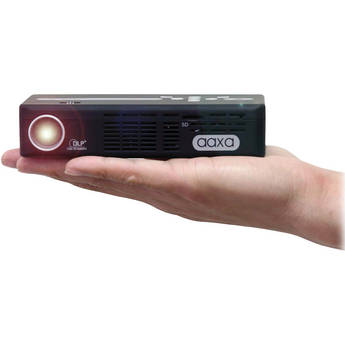Pico
Posted: July 31st, 2013 | Author: Michael Goldstein | | 4 Comments »
This blog post is a little nerdy. It’s about a small video projector, pictured above.
Most schools in the developing world lack electricity.
They also have few teachers with a science background. So teaching science can be tough.
Our CEO Jay asked me to bring over a small projector called a Pico. He wondered: might that work in our context? Could a small, battery operated projector show high-quality science videos?
So my colleague Josh tried out the Pico projector at Ongata Rongai. He showed a 2-minute video about airplanes. Josh writes:
The results were very positive: kids loved it and were very engaged. Staff were totally enamored.
Sound (with external speakers), image brightness, and image size were all good. The Pico is a solid product, and is definitely useable at our schools and in our classrooms.
Cost remains a stretch. It’s $300. But as Josh suggests, we could probably use a cheaper model. And prices on these things are falling. We might not be ready yet for a Pico in every school, but it’s worth experimenting with.
More from Josh:
Logistics:
-We stretched a white sheet over the window to deal with sunlight, but found that it had little impact; closing the door was probably the most effective thing we did to limit sunlight. We did not try switching rooms to one of the darker class 4 or 5 rooms at the school, but we could have done this and would likely have had an even darker class space, especially in the morning hours.
-We projected onto another white bedsheet and put the projector at two distances away–5 feet (creating a 3×2 foot image) and 7 feet (creating a 4×3 foot image). At both distances, kids at the back of the room had no trouble seeing the image. This projector has a brightness of 95 lumens, but I’m guessing we could go lower, to a cheaper model, and still have reasonably good image quality. I also personally tested projecting onto 8 sheets of A4 (in a 4×2 configuration) and found it just as effective (and much cheaper; the bedsheets cost about 650 shillings at Nakumatt).
-We used SBS A40 speakers I picked up yesterday at Nakumatt, which have an audio plug and require external power from a USB port, and found that the volume was more than adequate–we even had to turn it down so as not to disturb neighboring classes. These can be powered by plugging them directly into the Pico’s USB port (thus draining the battery further), or by plugging them into the AM’s external battery pack.
Perceptions:
-Kids watched the video twice and then answered a simple recall question whose answer was embedded in the video (“why do airplanes not need to flap their wings to fly?”). 17 out of 31 pupils answered correctly–so not a huge win on comprehension, but I imagine this would improve if we did things like preview the topic, provide pauses in the video for discussion, etc.
-We asked pupils afterwards if they enjoyed the movie and would like to see more in their classes, and they (predictably) said “yes” unanimously. During the whole session, there was a palpable sense of excitement and engagement amongst pupils.
-All 3 of the upper level teachers at OR watched the video, and afterwards they were generally enthusiastic. I heard from them that the projector would strengthen practicals and visually-oriented lessons in science especially (i.e. for the circulatory system), and that it might be a great tool for attracting more parents and pupils.
Thoughts moving forward:
-The projector can work with many media, including the SD cards currently used with nooks. These are fairly inexpensive.
-Power will be an ongoing (but not insurmountable) issue with this projector, given that it cannot charge from the AM’s battery pack (it requires a certain plug that AMs are not equipped with). Nightly charging will likely be necessary to ensure that the device is always ready to go in schools. The device is advertized as having a battery life of 75 minutes when no external speaker is attached. With a speaker attached, the battery life is likely much lower.
-Finding high-quality video may be difficult given that several good providers are expensive (i.e. National Geographic for kids) or inaccessible without an internet connection (i.e. Brainpop). That said, I believe that I will be able to find an inexpensive or free source of high-quality video that aligns with the Kenyan curriculum in science, and I imagine the same is true (at least for some lessons) in other subjects such as math.
This is the sort of thing our tiny R&D team will tackle. Can we increase student achievement with limited exposure to high-quality videos, in a way that we can afford without needing to ask our (poor) parents for more tuition?



Hey Mike,
For $20 Phillips makes a tiny yet effective portable speaker that runs on a rechargeable battery that can be charged through a USB port. They even come in Bridge Green.
http://www.usa.philips.com/c/cell-phone-accessories/green-sba3010grn_37/prd/en/
Thanks Mike!
Hi, Mike– I would also recommend projecting images and teaching students the Quadrant Analysis Approach to boost comprehension of VISUAL texts. Here’s my blog post on that (which will appear in my forthcoming book on Literacy and the Common Core): http://theliteracycookbook.wordpress.com/2013/02/06/approaches-to-the-common-core-quadrant-analysis-as-a-way-to-boost-comprehension/
ST – I’ll check it out!